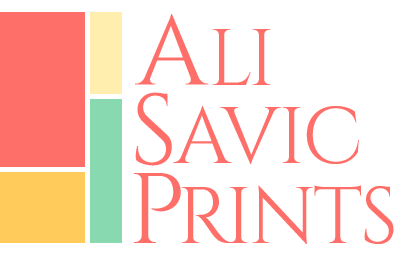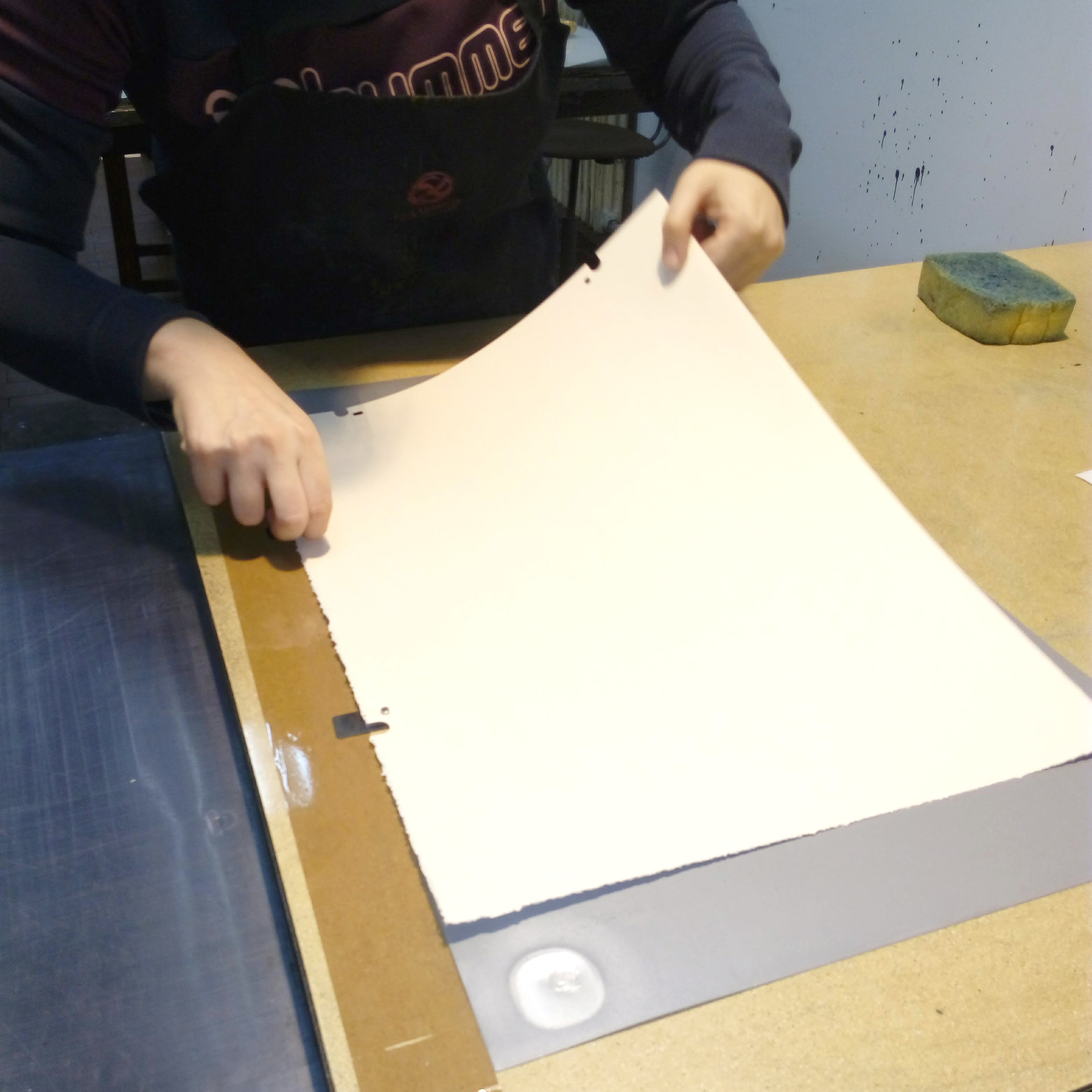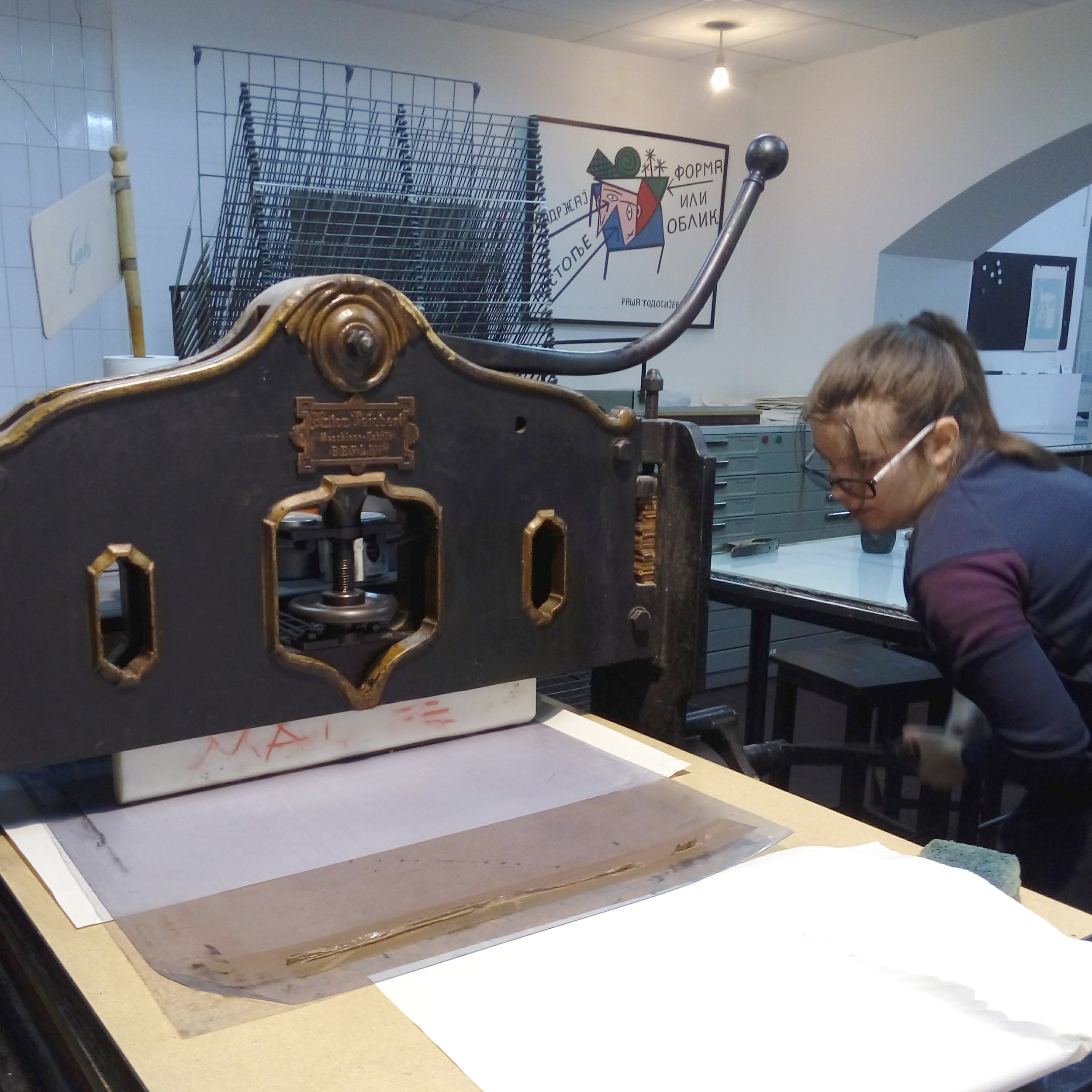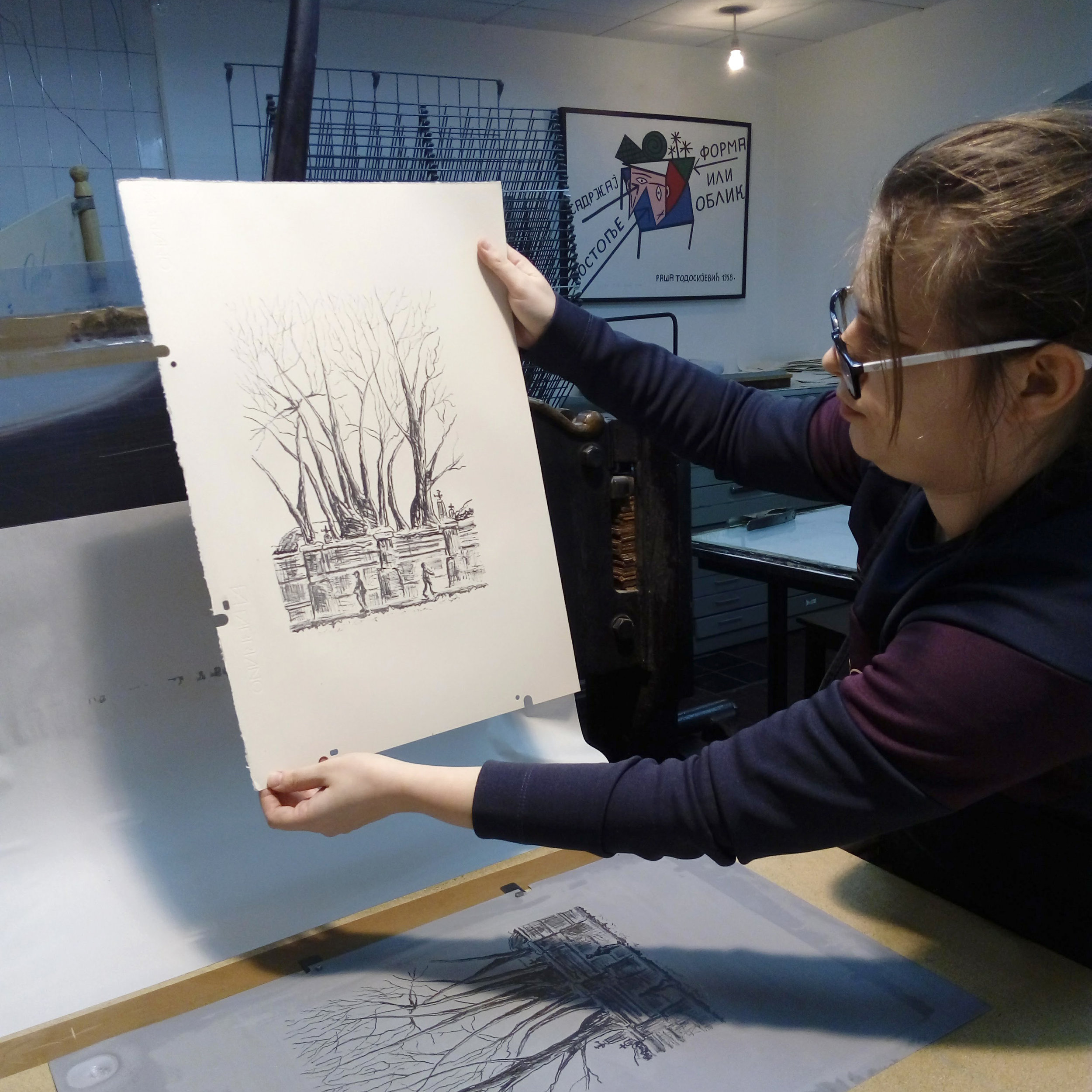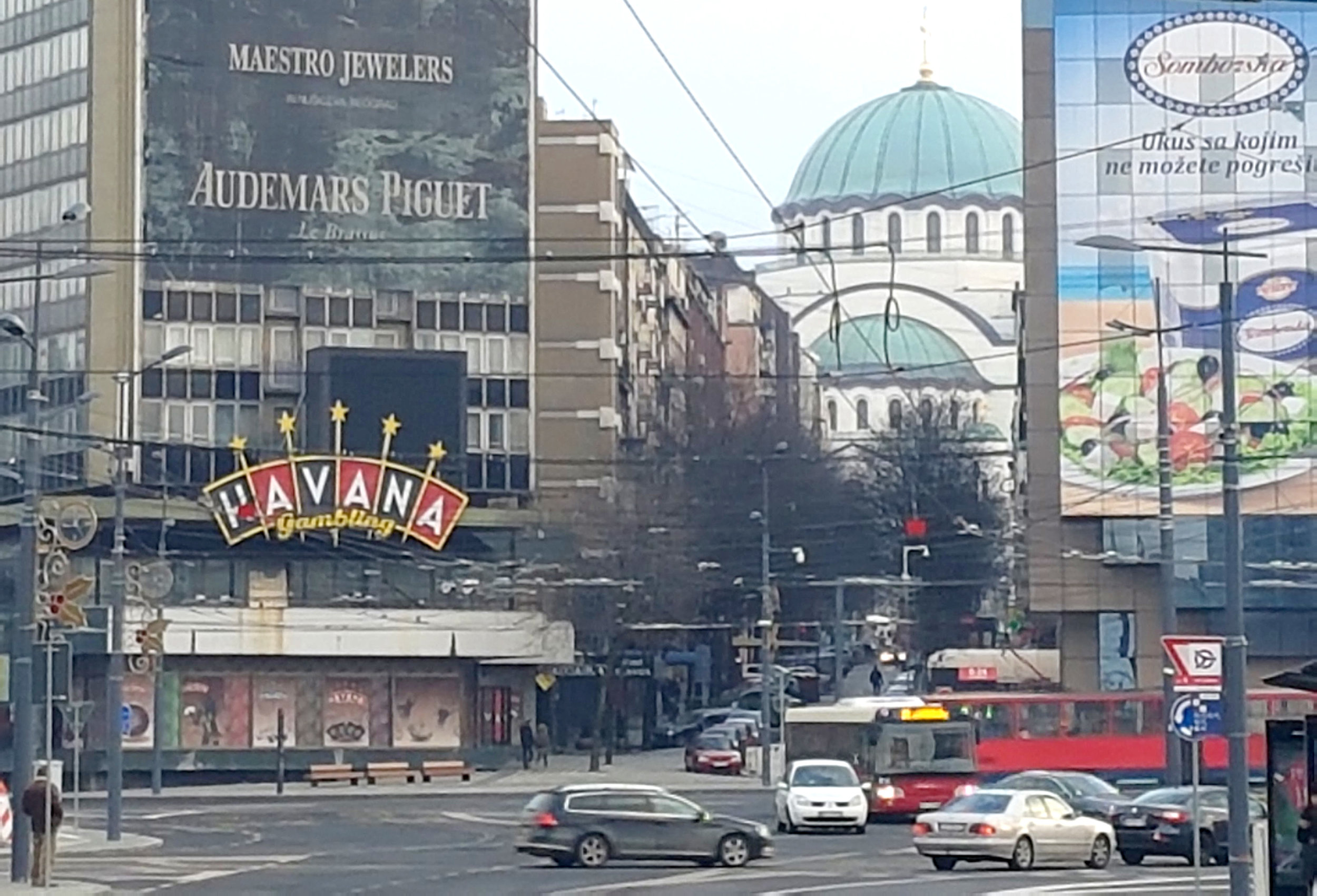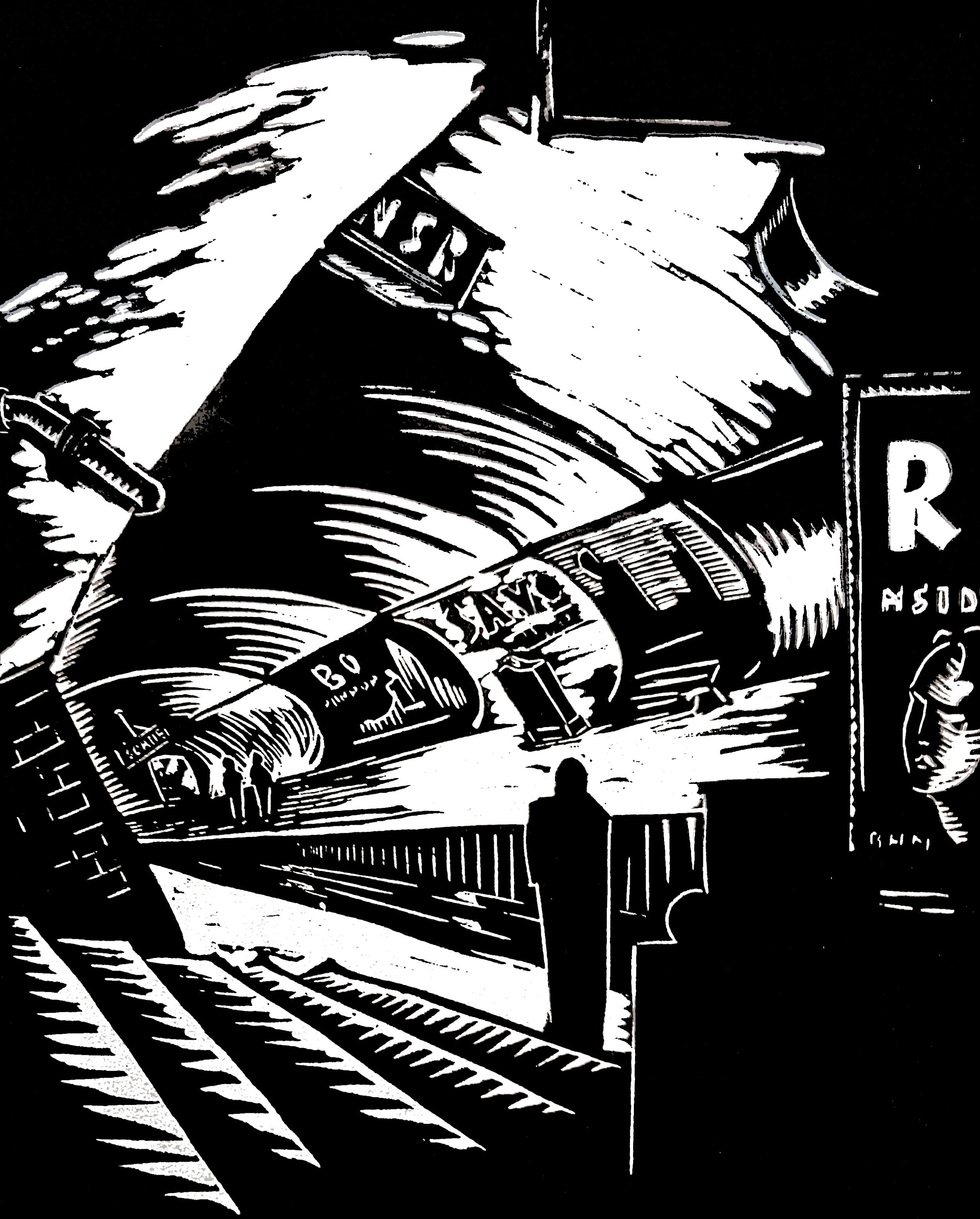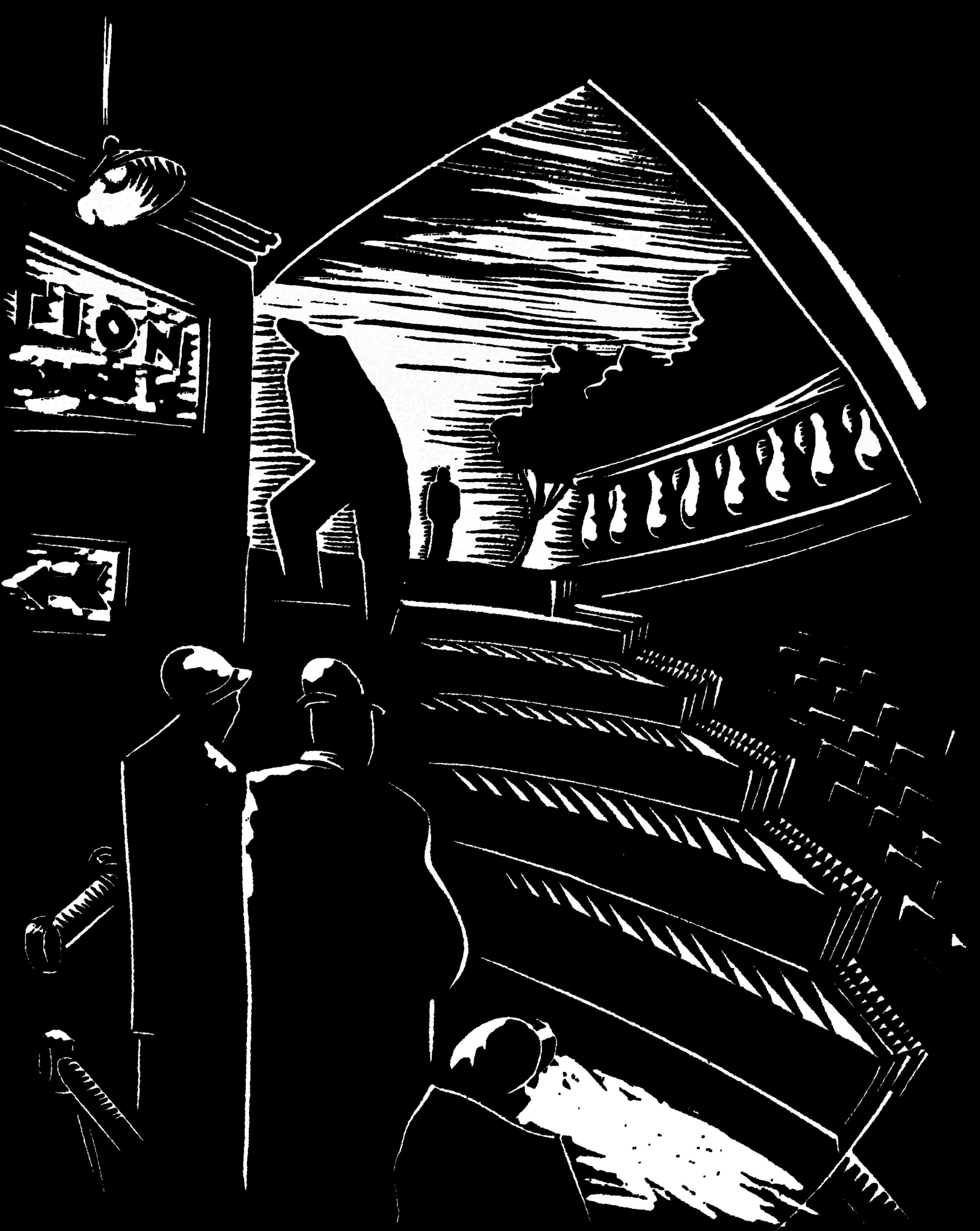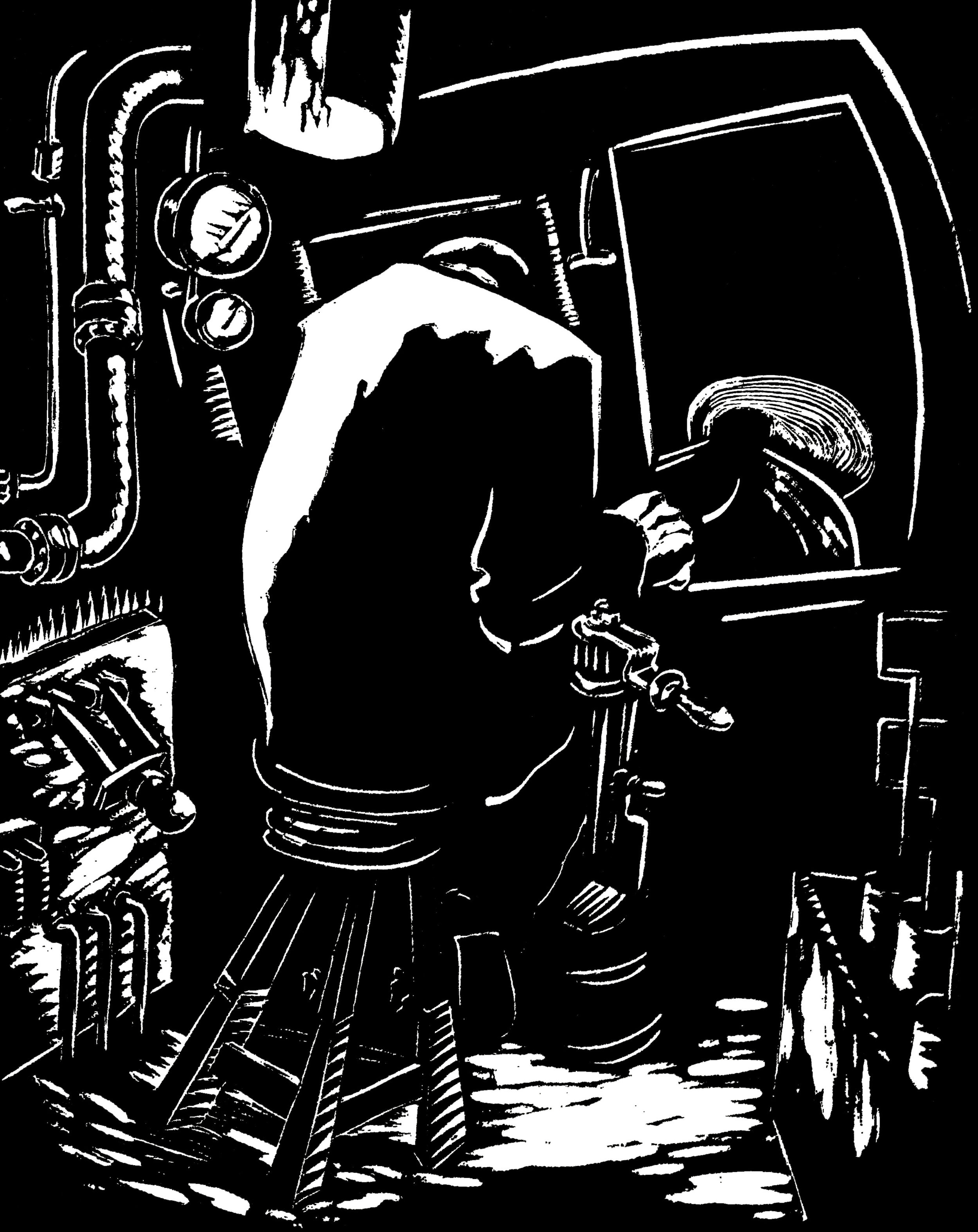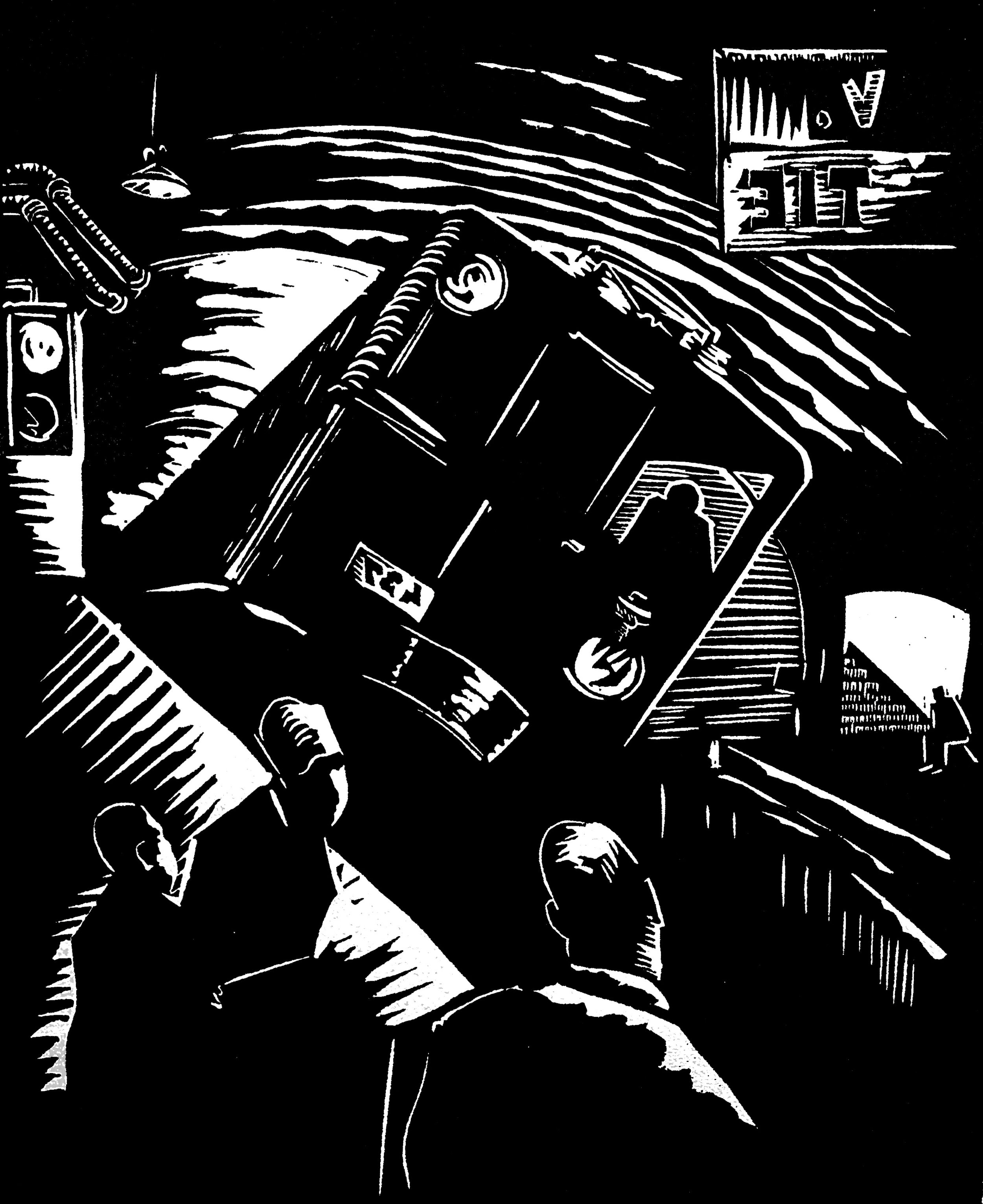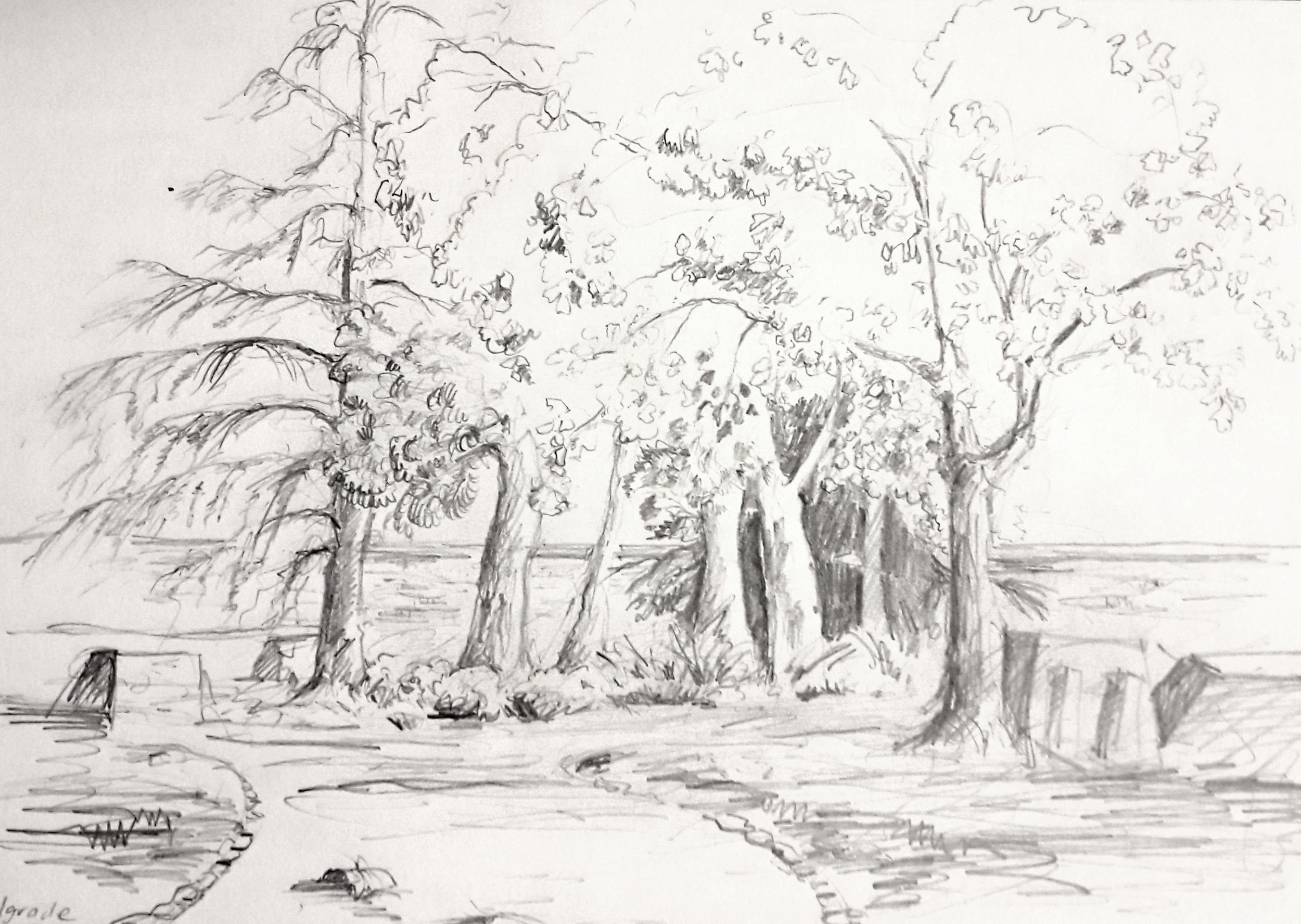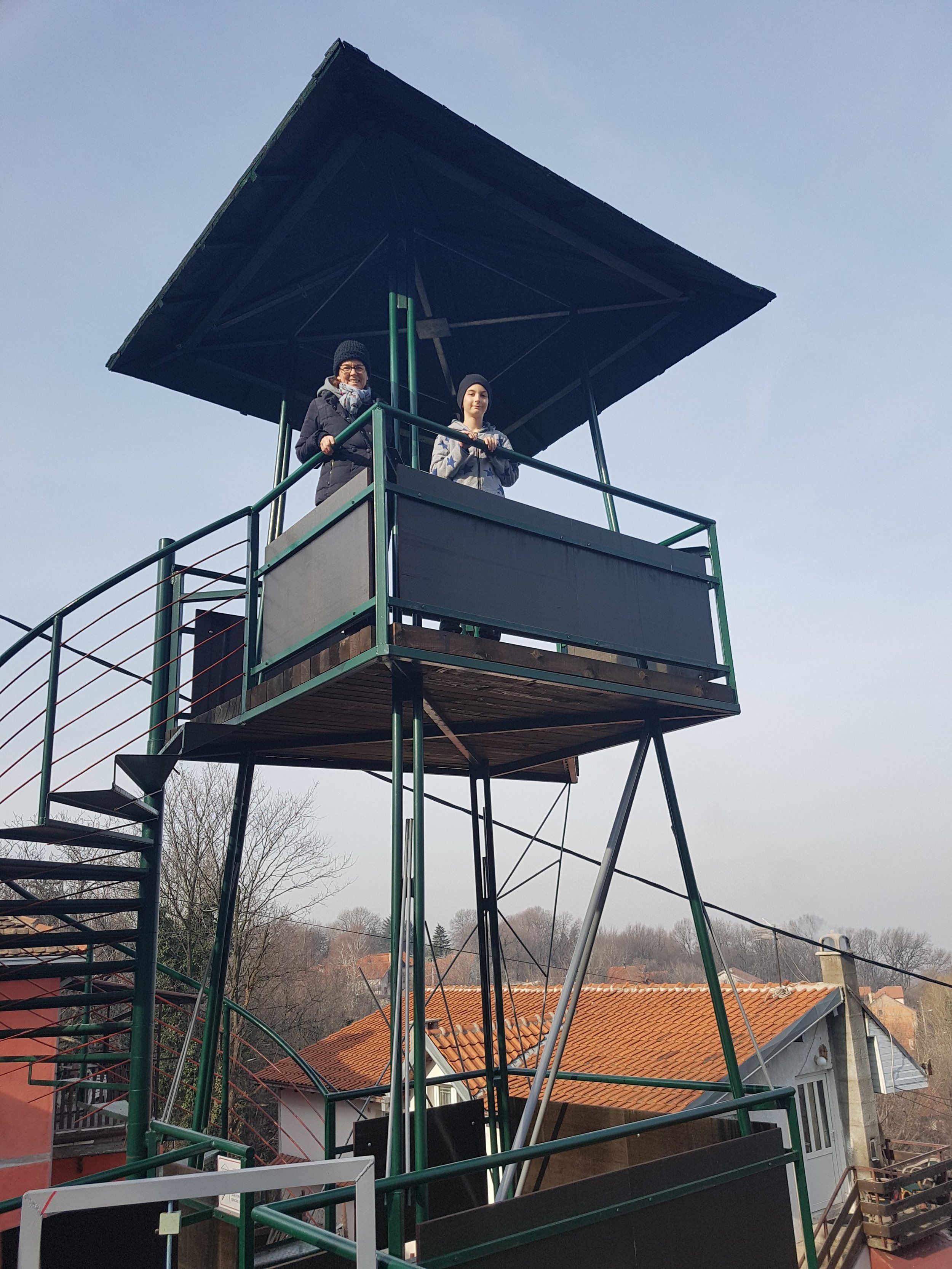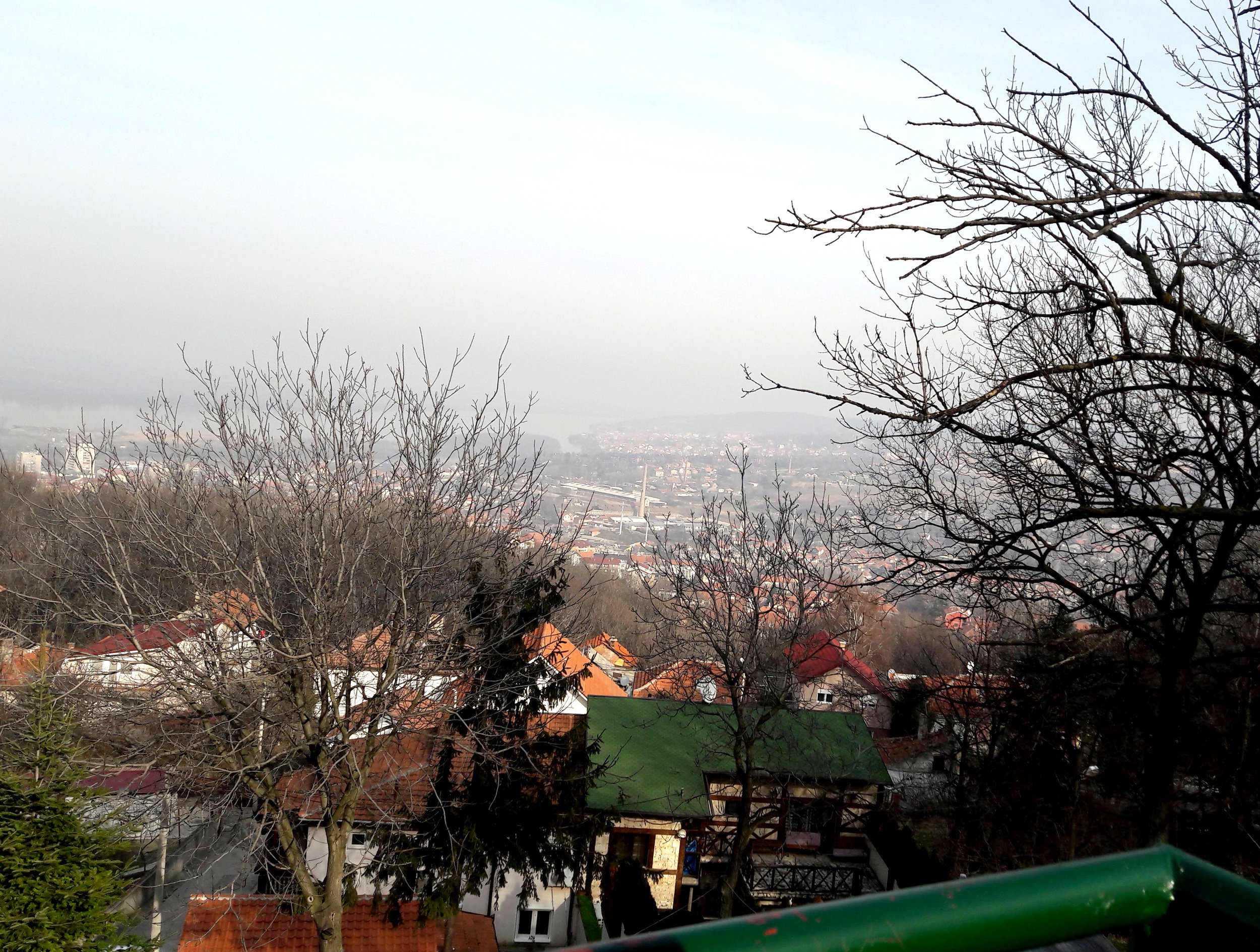My husband, Dragan, who is a native Serb, our 11 year old son, Aleks and I have embarked on an adventure, by moving to Belgrade from England for 8 months. These are excerpts from my weekly diary.
Metal Plate Lithography Printing at the Centar za Grafiku, Belgrade
Jelena, one of the Master Printmakers, printing my edition.
I have been lucky enough to use the facilities at the 'Centar za Grafiku' [1] (Printmaking Centre) in Belgrade for the last couple of months. I am a printmaker and need to use a printing press to create my prints. As well as offering the use of the intaglio presses, the Centre has two Master Printmakers who print sets of prints, known as editions, for artists. One of the processes they use is metal plate lithography [2]. Only the Master Printmakers are allowed to operate the lithography press and they are kept busy producing editions for a fee. I thought I would give it a go and have an edition printed for me - which is a first. I opted for a small edition of ten prints. Jelena, the Master Printmaker, prepared the metal plate for me and I was let loose with a black oily crayon to draw directly onto the plate. Once the drawing was complete, Jelena used some chemicals, including oil and bitumen, to prepare the plate to take the ink. To print, Jelena kept the plate moist with a damp sponge and then she rolled the ink with a leather roller onto the plate. The drawn areas accepted the ink and the paper was placed on top. After running the plate and paper through the press, the print was complete.
An Urban Stroll
Dragan and I had some free time, so we wandered around and took a few photos of the 'Železnička Stanica' (railway station) [3] by the Sava river in Belgrade. This used to be the main railway station but since 2016 the main station has gradually been relocated, so only a few trains depart from here now. Looking at the front of the building, you can see that the two different alphabets in Serbian are represented on this building, spelling 'Beograd' (which is Serbian for Belgrade).
Cyrillic БЕОГРАД (on the left) & Latin BEOGRAD (on the right).
Železnićka Stanica, Railway Station, Belgrade.
Belgrade's Railway Station.
On our way home the view of the huge hulk of St Sava Church kept appearing and disappearing between the 19th century edifices, 20th century high-rise and 21st century glass-clad structures.
View of St Sava Church from Slavija Roundabout
19th Century edifices meet 20th Century skyscrapers
A Serbian Serenade!
Dragan and I decided to eat out at 'Orašac', [4] a traditional Serbian restaurant. I was happy to see that the smoking section is completely separate and was surprised to be serenaded by Serbian folk musicians. Dragan remembers eating there with one of his professors from the nearby 'Gradjevinski Fakultet' (civil engineering faculty) back in the 80s and said it has hardly changed. We noted that quite a few foreigners were eating there that night too. Needless to say the food was excellent and the acoustic music was superb.
Traditional Serbian music in 'Orašac' restaurant, Belgrade
